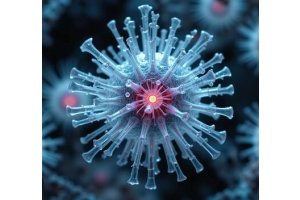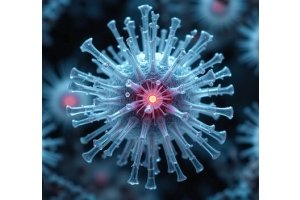Dangers of inbreeding and the necessity to preserve male lines in thoroughbreds. Dr B. Stoffel
This subject was presented at the recent 2023 general assembly of the EFTBA (European Federation of Thoroughbreds breeders Associations).
Inbreeding - a concern of many breeders - is the proportion of genes carried by the chromosomes inherited identically from both parents.
Situation of inbreeding in the Thoroughbred breed
The Thoroughbred breed has low genetic diversity compared to most other horse breeds, given its low population numbers and a trend of increasing inbreeding. This trend in the global Thoroughbred population has been reported for the past few decades and is unlikely to stop due to current breeding practices. 97% of the pedigrees of the horses included in a recent study include the paternal ancestor, Northern Dancer (1961) and 35% and 55% contain Saddler's Wells (1981) and Danehill (1986), respectively in Europe and Oceania.
Inbreeding can expose to harmful mutations: this leads to a “mutational load” in populations that can negatively impact population viability. In North America, a large study has shown that higher inbreeding is associated with a decrease in the number of races per horse, a very quantifiable criterion, and these results indicate a correlation with the decrease in the physical resistance of horses.
Interestingly - and worrisomely - many of the performance and endurance limiting genetic diseases in Thoroughbreds generally do not negatively impact reproductive capacities. Some diseases, with known hereditary components, are very (too) well controlled by surgery (OCD, wind problems), nutritional and physical management (muscular disorders) and medication (epistaxis, gastric ulcers). Unfortunately, this increases the risk of spreading harmful genes in the population, because the individuals treated in this way end up in breeding and are likely to transmit their weaknesses to their offspring, who themselves will disseminate them.
Types of inbreeding
Of course, the studbook having been closed for three centuries, all Thoroughbreds have a certain percentage of inbreeding. And not all inbreeding is bad. Breeders have selected for beneficial traits over generations, which have favoured certain traits because they likely contain beneficial genes for racing.
Historical inbreeding (resulting from distant duplicate pedigrees) results in short DNA sequences inherited identically from sire and dam. This can be considered a "good" inbreeding. It has no negative effect on the race and may carry beneficial mutations that have been maintained by distant ancestors through breeder selection.
Recent inbreeding (resulting from duplicate close pedigrees) results in long stretches of DNA inherited identically from sire and dam. This can be considered "bad" inbreeding and is negatively associated with running and physical endurance. It may carry harmful mutations that have not yet been “purged” from the population.
However, this recent inbreeding is on the rise.
Obviously, in terms of breeding, it’s always possible to find examples and counterexamples of remarkable individuals, but the science of genetics is based on statistics and not on individual cases.
Sires' lines
Male Y chromosome analysis is the most established way to reconstruct paternal family history in both humans and animal species. The paternally inherited Y chromosome displays the genetic history of the male population.
Unfortunately, the male gene pool is restricted in the English Thoroughbred, with only three sire lines remaining. The official Stud Book shows that the Thoroughbred sire lines can be traced back to three founding stallions who were imported to England in the late 17th century. The inheritance of the Thoroughbred sire lines can now be better understood and determined using the new Y chromosome information. It is now possible to clearly distinguish the sublines of Darley Arabian, born in 1700, Godolphin Arabian, born in 1724 and from the third founder, Byerley Turk, born in 1680.
There are now 10 different types and subtypes of Y chromosomes known in the Thoroughbred: 2 come from Godolphin Arabian, 5 come from Byerley Turk and 3 come from Darley Arabian.
Even though genetic analysis also shows that there was an error in the stud Book recording of St Simon's parentage and that horses descending from St Simon should be attributed to the Byerley Turk line, probably over 90 % of current stallions are from the Darley Arabian male line. There is therefore a real risk that we could soon lose a large part of the diversity of the Y chromosome. However, the thoroughbred breed was built on the interactions between these three lines.
Conclusions and solutions:
As passionate breeders of the thoroughbred breed, we must all do what we can to ensure that it is managed sustainably for future generations, with the breeding goal of producing viable racehorses, and champions if possible. International breeding authorities are studying the situation and thinking about general measures allowing the sustainability of the breed. But what can individual breeders do to produce attractive foals that are safe from genetic threats? How do you avoid the risk of breeding horses that are less fit to race?
There is no miracle recipe, and each breeder legitimately has his preferences.
An increasingly important criterion for the choice of a stallion or a mare is his physical resistance and his vitality, as well as those of his family. It is often preferable to avoid using individuals who have shown constitutive weaknesses, or who seem to transmit them.
The use of stallions from different male lines can make it possible to sublimate a strain and better manage the following generations. The study of pedigrees must exceed the 3 generations of catalogue pages....
In the future, genomics, the science that studies all the genetic material of an individual or a species, encoded in its DNA, will certainly be able to provide predictive tools to breeders. This is a track to follow.
Commercial pedigrees of "perfect foals for sales" are often contrasted with pedigrees of foals "made first to be racehorses".... What if the truth was in the middle?
A special thank to Prof. Emmeline Hill for her precious help !






